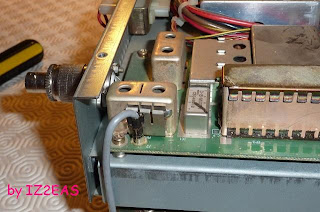
Ormai si ascolta davvero di tutto. Dalle FM alle utility, dalle broadcasting ai… terremoti oppure i temporali, i tram, la corrente alternata.
Si sta allargando la schiera degli appassionati che esplorano le VLF, le onde lunghissime tra i 3 e i 30 kHz. Quelle dei Watussi… Ma anche quelle più lunghe: ULF da 300 Hertz a 3 kHz; SLF: 30 – 300 Hertz; ELF: 3 – 30 Hertz.
A parte scherzi, si tratta di un hobby in espansione che sconfina nello studio di alcuni aspetti molto interessanti della vita del nostro pianeta. Si parla infatti di Radio Natura.
Tra l'altro nelle ULF si segnalano impulsi che pare precedano i terremoti. Nelle SLF invece si trova la gamma della corrente alternata civile, i 50 Hz. Le ELF vengono usate per le comunicazioni tra sommergibili o per attività subacquee (vedi Wikipedia).
Adesso sul mercato è arrivato un ricevitore italiano molto interessante che copre le frequenze tra i 120 Hz ai 10 kHz con l’antenna standard in dotazione. Si tratta dell’Explorer E202. Un apparato piccolo e leggero, alimentato anche a pile, che può essere portato a spasso, meglio se lontano dalle città inquinate da disturbi di ogni tipo.

In Italia è commercializzato dalla Sistel, del noto Claudio Re (un nome una garanzia), ingegnere, costruttore, progettista, radioamatore e responsabile tecnico del network mondiale di Radio Maria (oltre 50 nazioni servite). Il costo è molto abbordabile per un oggetto di nicchia e di livello come questo, inferiore ai 250 euro. Nel sito della Sistel potete trovare molte informazioni aggiuntive.
"Con la cuffia - spiega Claudio Re - si ascoltano i segnali di radio natura, statiche, fulmini, tweeks, chorus, l’asciugacapelli del vicino, le linee dei tram... o si puo’ usare come stadio di ingresso per mandarlo ad una scheda audio e un software (ad esempio Spectrum Lab) con cui ascoltare le stazioni che trasmettono ai sommergibili russi , le stazioni marine di dati fino a 24 Khz, il sistema di radionavigazione Russo Alfa, cercare alcune anomalie sulla propagazione dovute alle tempeste solari (SID) e altro ancora. Io lo uso anche mentre viaggio in macchina con uno stilo con base magnetica o mentre passeggio con il cane, con la sua antenna".
Ulteriori informazioni, dettagliate e interessanti, le trovate sul sito del costruttore, Renato Romero.
Se qualcuno è interessato all'argomento e vuole approfondire le proprie conoscenze su questo ambito delle onde elettromagnetiche può iniziare dal sito Radio Waves Below 22 kHz






























